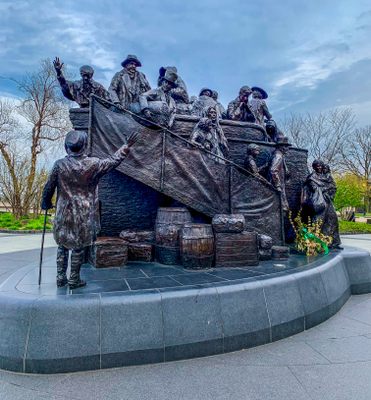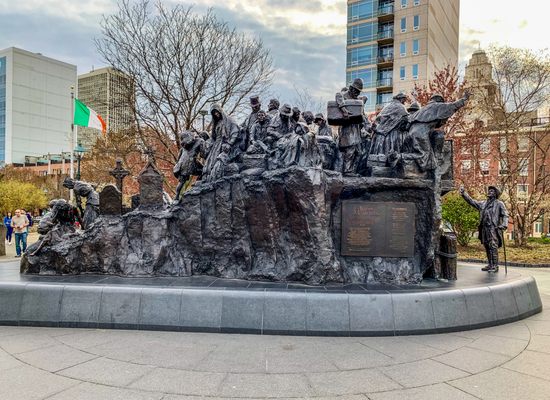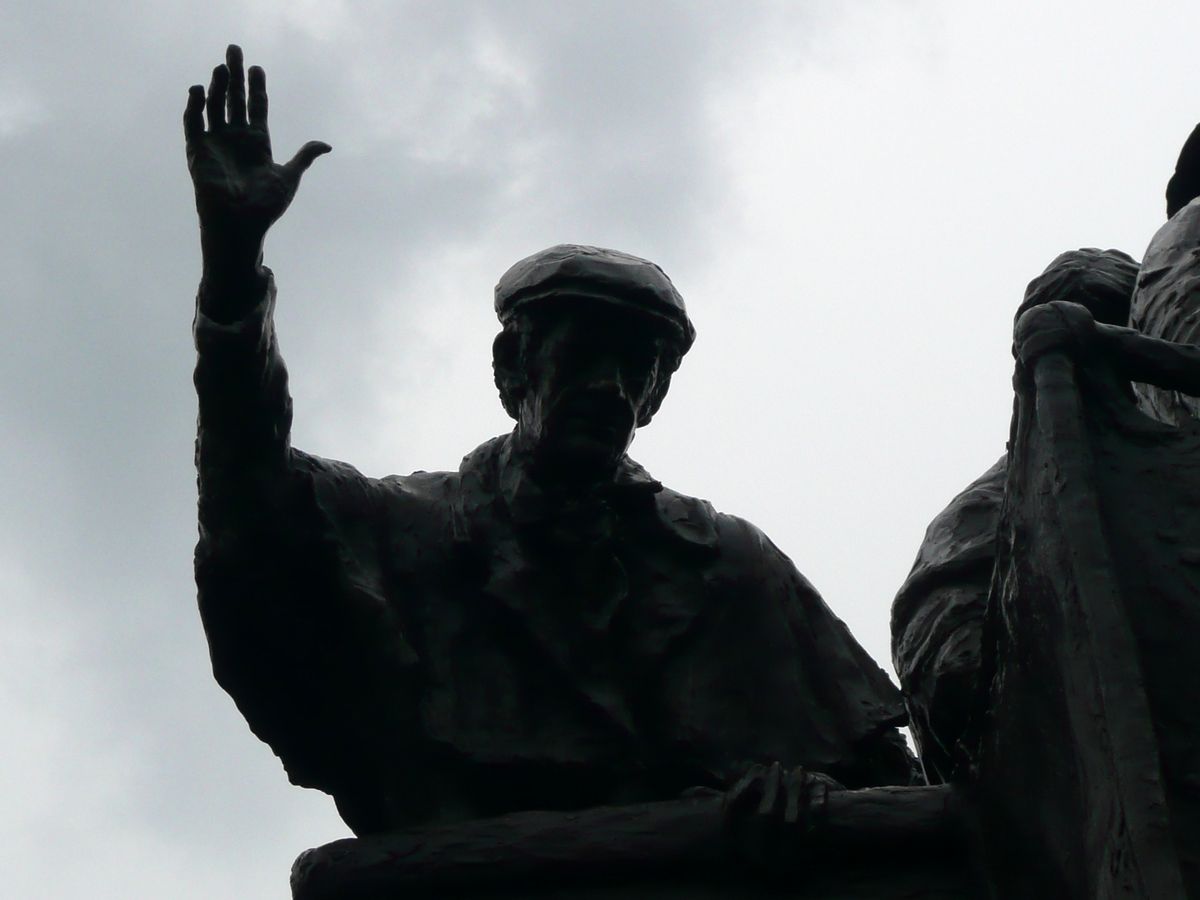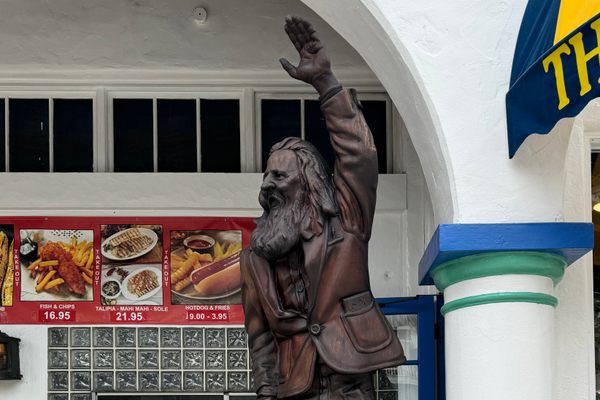About
In 1845, Ireland's potato crop failed due to potato blight, beginning a seven-year stretch of starvation and privation. As a result of this and the fact that Ireland was exporting grain rather than distributing it to its hungry masses (because, profit), nearly one million died and another million emigrated to other countries.
We call this period the Great Potato Famine; in Irish it is "an Gorta Mór" (the Great Hunger). Many of the Irish emigrated to the United States as a consequence. Philadelphia received a large number of Irish immigrants following the exodus and by 1860, Irish Americans constituted the largest immigrant group in Philadelphia, with continued strong immigration into the 20th century. Even today, approximately 14 percent of Philadelphians have Irish ancestry, including many prominent Philadelphians that pushed for the memorial's creation.
The Irish Memorial, created by artist Glenna Goodacre in bronze, commemorates those who perished due to potato blight, politics, and the fact that an abundant amount of food was being shipped elsewhere. It also honors those who left behind everything they knew in the hopes of making a better life for themselves and providing for their families back home in Ireland. The sculpture, with life-sized figures depicting departure and arrival from Ireland and the mourning of the dead, cannot be fully appreciated from any one angle; visitors must walk around it to see every detail. Each angle offers a different perspective on an Gorta Mór, and so will each visit.
Related Tags
Community Contributors
Added By
Published
December 18, 2013























































